As cyclists, we want to be able to leave our bikes locked and unattended with the peace of mind that nothing will happen to them. In urban areas, bike theft is a real issue. If you don’t have the right lock or are not using it properly, you could be inadvertently making your bike a target for thieves.

Bike locks fall into four main types: U-locks, chains, folding locks and cable locks. Each can deter theft but some styles of locks are more effective in particular situations than others and may suit your needs better. While all can easily travel with you, each style offers different features, such as flexibility, durability and overall protection for your bike. Here are the pros and cons of the four of the main styles of bicycle locks available.
U-lock
A U-locks is made from a solid-steel shackle that attaches to a crossbar with a deadbolt design. It often uses a key to lock and unlock. The metal is usually covered to protect it from the elements. You can see good examples of U-locks with Kryptonite’s Evolution series.
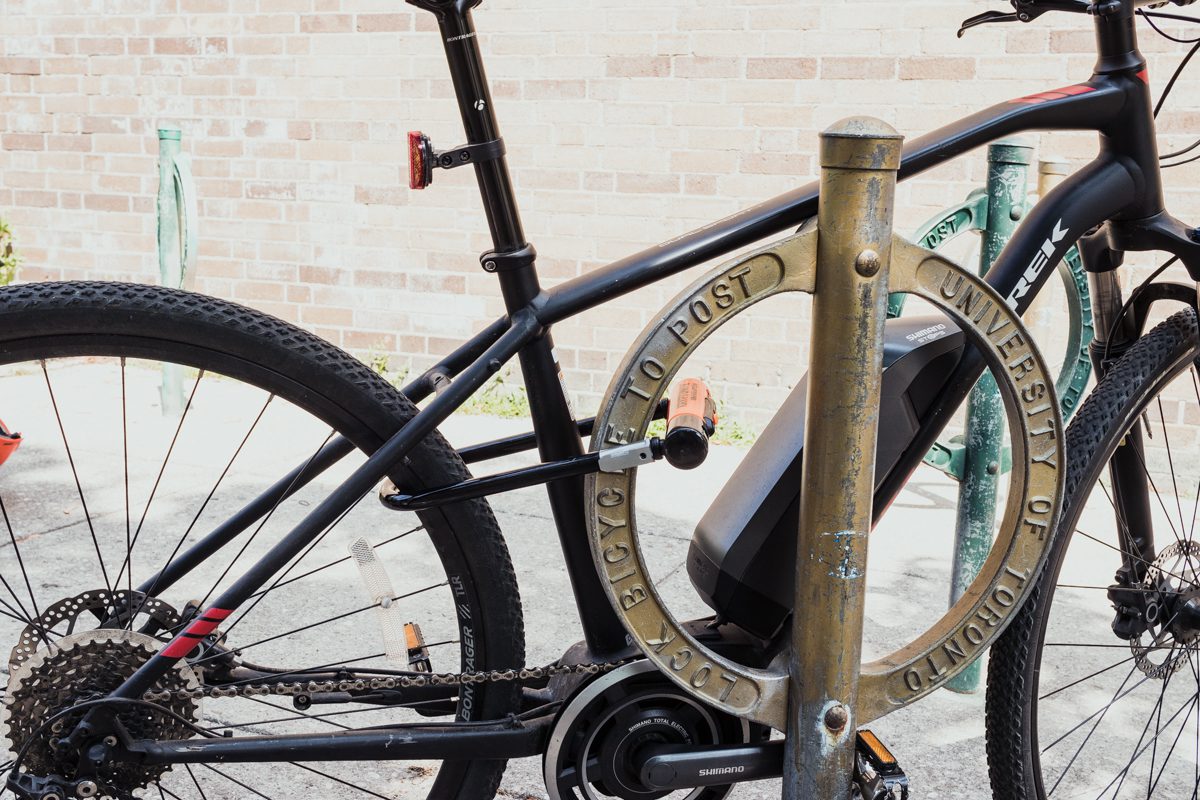
Pros
A U-lock is very strong because of its simple two-piece design. It has few vulnerabilities because a solid piece of steel would require strong, usually mechanized tools to get through. It is also relatively light considering how strong it is. A U-lock often comes with mounts that allow you to attach it to your bicycle frame so you can always have it with you. With an extra cable or bar, you can also lock up the frame and wheels without a problem. A U-locks is often regarded as the most secure lock you can use on your bike, especially if you use an extra cable to secure both your wheels.
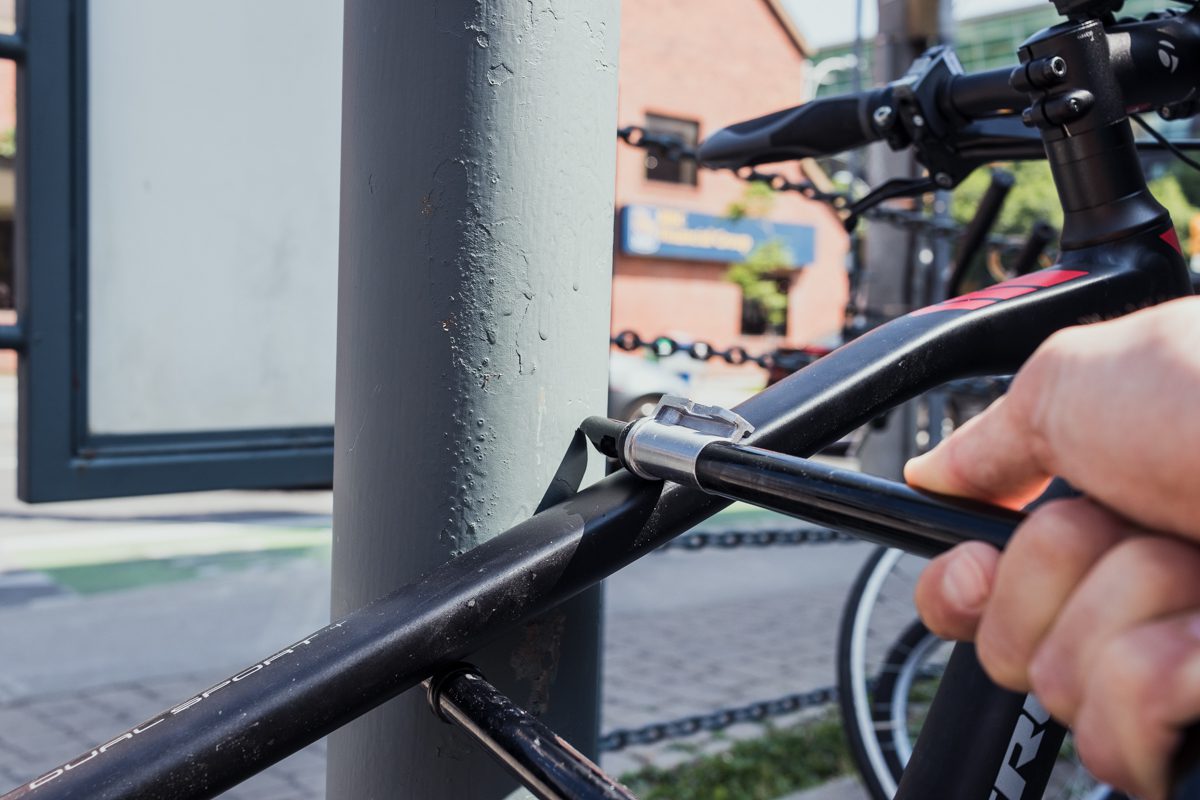
Cons
The solid shape of a U-lock doesn’t give it a great deal of flexibility to lock your bike to objects of various shapes and sizes. It can be hard to lock your bike to wide poles or other objects using a U-lock because of its inability to flex or change shape. You can find work-arounds with additional cables or an extender along with the U-lock. But if a post is too thick or your frame shape is a little different, then locking up could get a little tricky. Without an extra cable, it can sometimes be hard to secure the frame and a wheel as well.
Chain
A chain bicycle lock is sturdy linked metal often secured with a padlock or combination lock. A chain can be wrapped around numerous bikes, and easily through the frame and wheels because of its ability to dramatically change shape. An example of a sturdy chain lock designed for bicycles is the Kryptonite Combo Chain 990.
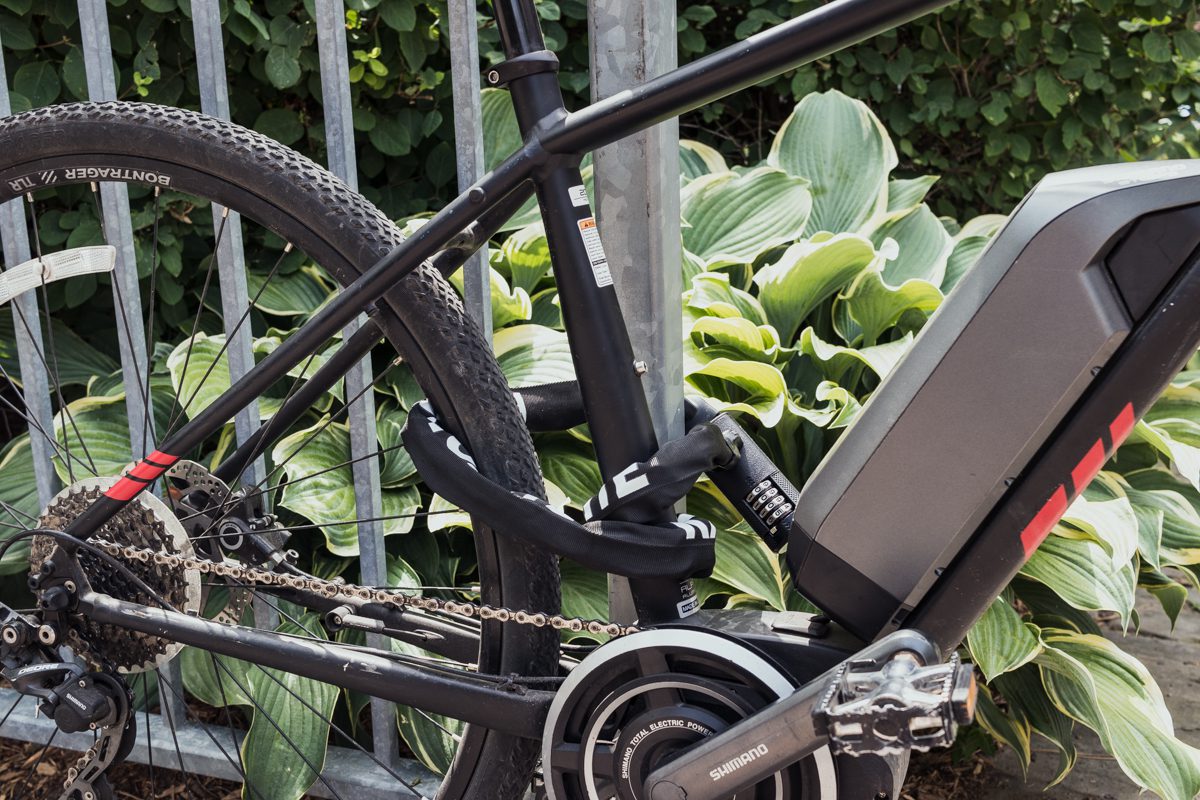
Pros
The appearance of a well-locked chain will likely be a deterrent in and of itself with its heavy metal construction and sturdy looks. As far as locks go, chains are perhaps the most imposing, although a well-prepared thief won’t necessarily be discouraged. The flexibility and length of a chain also makes it possible for it to be secured to various street objects, such as wide poles and other things that are not specifically designed for bikes. A chain can also be wrapped in various ways to secure numerous bikes or different parts of the bike, like the wheels, if desired.
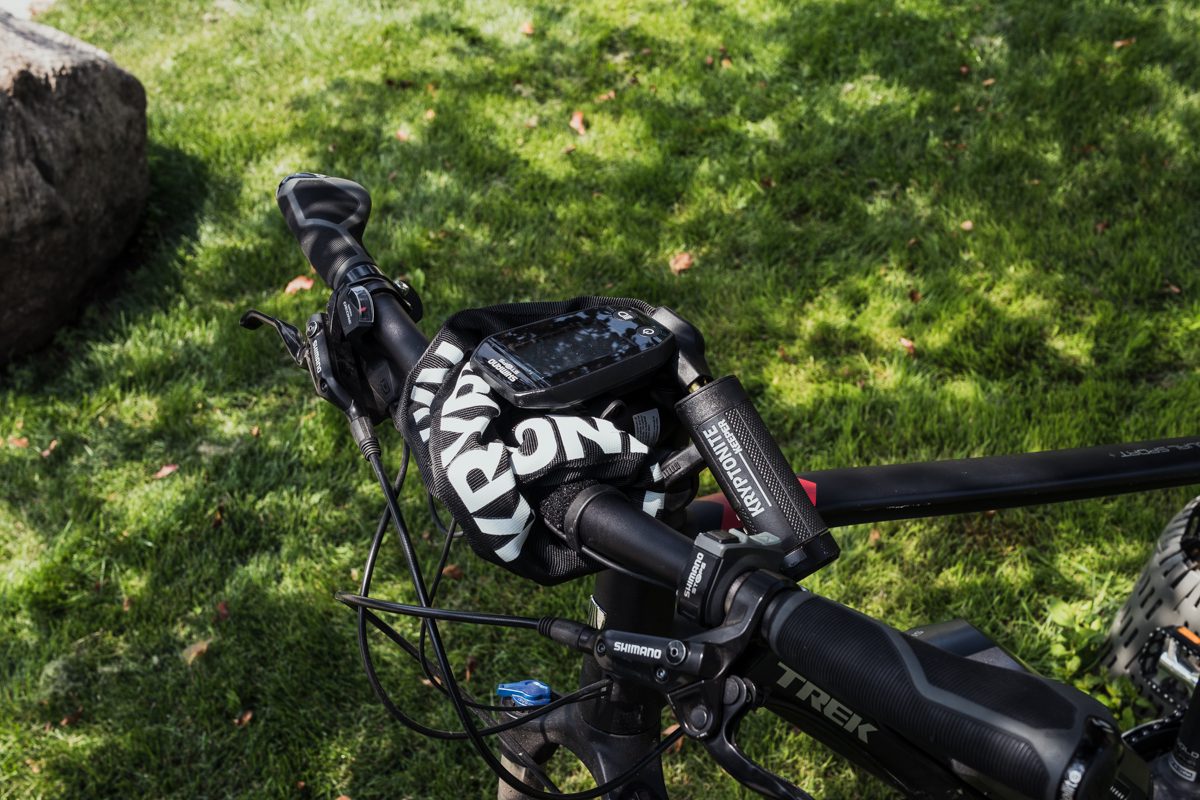
Cons
Chains are heavy and can be awkward to carry. While you can wrap it around the frame or handlebar, compared with smaller, more compact locks, a chain can be a little trickier to transport without a bag. It also tends to weigh more and take up more space than other locks.
Folding lock
A folding bike lock is constructed using a series of metal bars joined together with sturdy pivots. The bars and pivots form a loop secured with a combination or padlock. The lock can fold out to be wrapped around a bike and a post. Kryptonite’s folding lock is the Keeper 585 Fold.

Pros
A folding lock is conveniently compact and flexible enough to secure your frame to various objects, often with room to catch a wheel, too. Because the lock’s metal construction is clearly visible, its looks also offer a slight theft deterrent. With a mount to attach a folding lock to your bike, it is also very easy to carry around. In a pack, it’s compact and self-contained so it won’t knock other objects in your bag.

Cons
While a folding lock has more flexibility than a U-lock, it is still trickier to wrap around different shaped bikes and objects than chain or cable lock. A folding lock can be a little awkward to manipulate and may take some getting used to when securing your bike. While the metal links and pivots are very sturdy, they are the most vulnerable parts that a thief could try to exploit.
Cable lock
A cable lock is built with braided steel in a protective vinyl covering. Like a chain, it is very flexible and use with a combination or padlock. The cable lock is generally regarded as one of the less-secure locks but can be sufficient if you are locking your bike in a secure spot and your bike isn’t very high-end. Cable locks come in all shapes and sizes, but the Kryptonite Flex 1565 Combo Lock is a sturdy, well-designed example of this style.
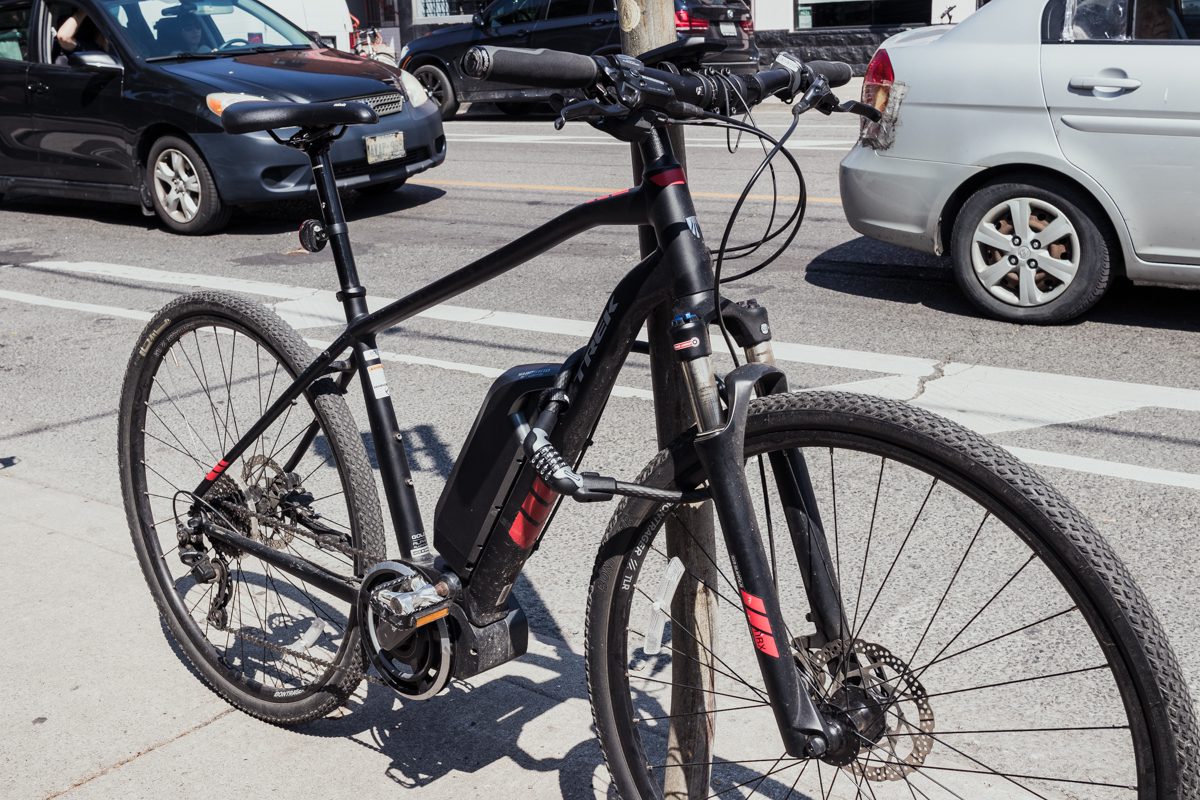
Pros
Some of the lightest bike locks are cable locks. A cable is easy to carry. You can attach it to your frame, loop it around your handlebars, fit it into a pocket or even loop it on your belt. It’s the easiest lock the thread round objects and your bike thanks to its flexibility. The whole process is straightforward.
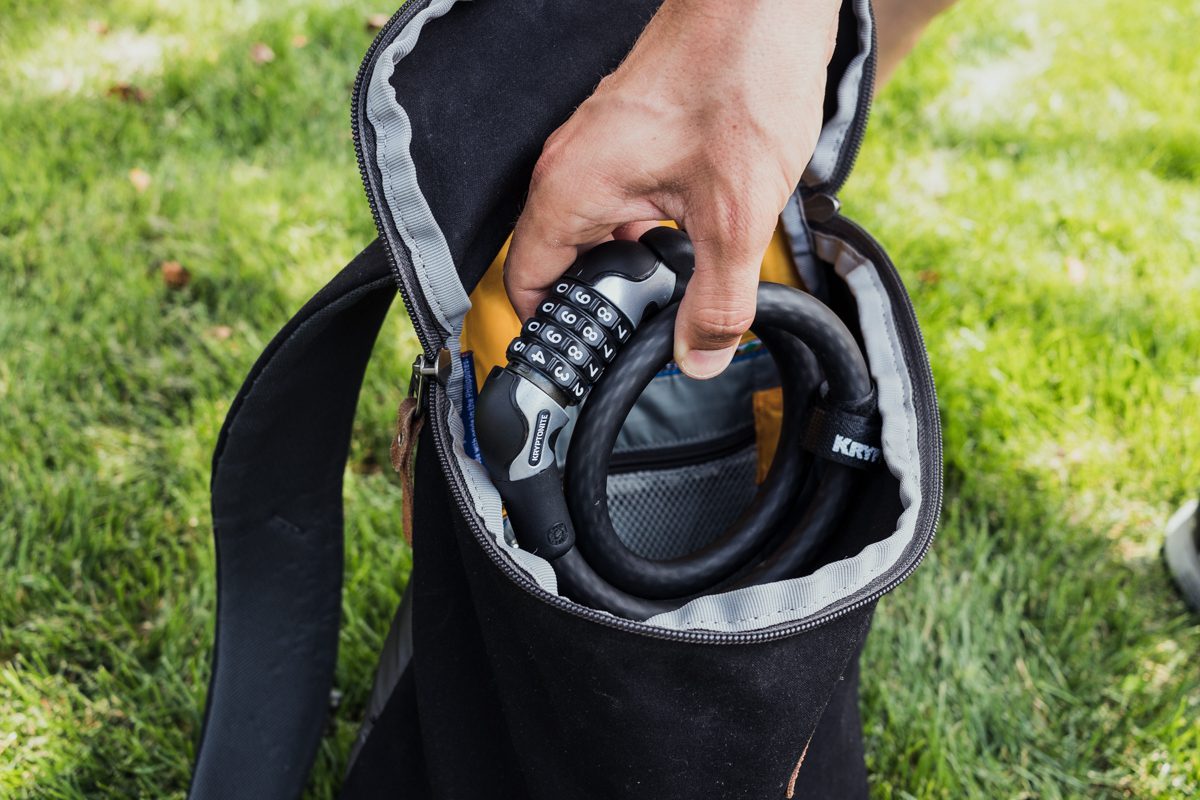
Cons
A cable isn’t as sturdy as the other forms of locks. It’s the easiest for a prepared thief to break. Its lightweight design is also not particularly imposing, so it acts as less of a deterrent for thieves. A combination lock is generally regarded as less secure than a key lock, which has a more solid metal construction. A cable lock is best-suited for a less-expensive commuter that is being locked up in a secure area for a short period of time.
